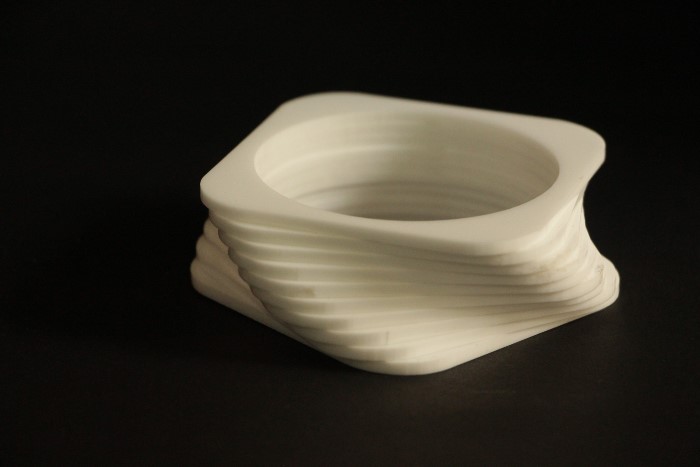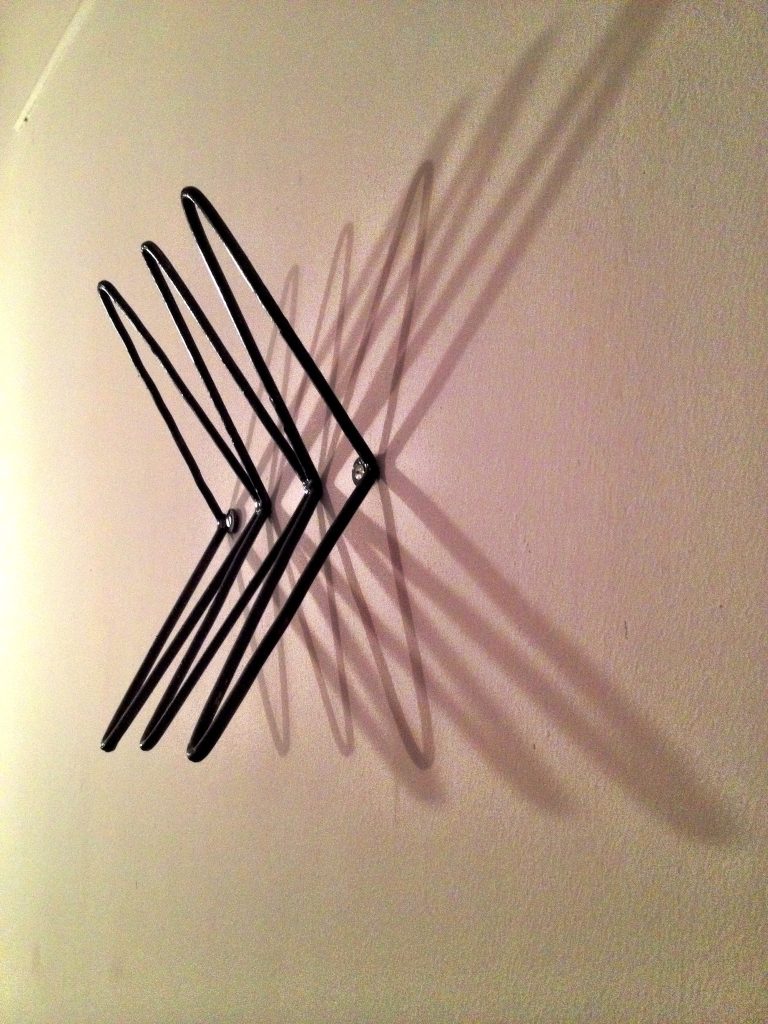
 In the extremely dynamic world of Design, a company like DesignAware that dabbles in 3D and digital fabrication, and employs technology to create futuristic designs takes the game a notch higher. DesignAware believes in the democratisation of design. In other words, designs should be created in a way that would impact and be accessible to everyone and not just to a select few. In an interview with Cinderbay, the 32-year-old London-educated founder of DesignAware, Takbir Fatima speaks about, among other things, the latest innovations in the field of Design technology, the christening of her company as a movement, and the adventurous trajectory of DesignAware.
In the extremely dynamic world of Design, a company like DesignAware that dabbles in 3D and digital fabrication, and employs technology to create futuristic designs takes the game a notch higher. DesignAware believes in the democratisation of design. In other words, designs should be created in a way that would impact and be accessible to everyone and not just to a select few. In an interview with Cinderbay, the 32-year-old London-educated founder of DesignAware, Takbir Fatima speaks about, among other things, the latest innovations in the field of Design technology, the christening of her company as a movement, and the adventurous trajectory of DesignAware.

What prompted you to start Design Aware?
DesignAware was born of a desire to create awareness through liveable, wearable, usable, accessible and responsible design. Design is usually seen as a luxury accessible only to the elite, and we wanted to prove that this is not the case. We initially started with a series of experiments with 3D form and digital fabrication resulting in the design of wearables, which, over the years, has evolved to include products, lighting, furniture, interiors, architecture and education projects.
When was DesignAware conceived?
I conceived DesignAware when I was a student of March at the Design Research Lab of the AA School of Architecture in London in 2011.
How can one describe DesignAware and how different is it from its contemporaries?
DesignAware is not just a business, it’s a movement to create awareness about design and make it more accessible and widespread. At DesignAware, we have a lab-like approach to work, which is more experimental and open-ended. Many of our projects begin with a question, and we try to arrive at an answer through the design process.
Apart from mainstream design projects, we actively seek and take up pro bono or non-profit projects which we feel would be of value to the community. We have completed a school for children of disadvantaged backgrounds and are currently working on a mosque.

What are the merits of 3D design model?
Digital 3D modeling has been around in India for almost two decades, and architects and designer have been using digital tools to model and visualize architecture and interiors. New techniques that are now becoming commonplace are digital fabrication techniques such as CNC cutting and 3D printing. These are digitally-controlled methods of fabrication, in which, to put it simply, a digital 3D model is sent to the machine, and the machine reads its coordinates and fabricates it to scale in various materials. CNC cutting and laser-cutting are subtractive methods, in which a material is cut to create the desired form. 3D printing is an additive method, in which layers of material are placed one over the other to result in a 3D model. 3D printing is a more flexible method which can be used to create freeform geometries and doubly-curved surfaces, as well as complex structures that cannot be created using other methods.

What is the process employed by you when designing a house or a room?
We have a process-oriented approach to design. The first stage consists of conceptualization, in which we study the context, precedents, and requirements of a particular project. We work in 3D from the very beginning. All through the process, we go back and forth between digital and physical models in order to generate the form, work out details and for fabrication.
Was it difficult for you or your team to explain the concept to your customers?
I believe it is important to explain design in simple terms which are easy to understand, no matter how complex the idea maybe. We use various methods of communication and presentation to bring our designs to clients. The presentation is very important in communication your ideas.

Do you only dabble in interior design or have you ventured into other designs as well?
As architects and designers, I’d like to stress we don’t dabble in design, but are fully immersed in design. Design as a profession is a very laborious and all-consuming process. Apart from interior design, we practice architecture, urban design, product, lighting, furniture and wearable design. We like to think very carefully and deeply about each of our projects, be it the design of a ring or that of a commercial complex.
Apart from being an architect, I’m also an educator. I like to keep myself involved in academia, and have developed a series of 3D thinking workshops called the Fractals Workshop series, which I have taught in various design and architecture colleges in India and abroad.
How difficult or easy would you say 3D design or Fibreglass techniques, compared to other conventional forms of design, and why should more people embrace it?
3D printing and laser-cutting are fabrication techniques. The design methods we use are quite traditional, albeit the tools are digital. As I said earlier, 3D printing is a method in which material is added in layers can be used to create forms that are complex, which cannot be created using other methods. People who are using 3D printing to create conventional designs may not be doing justice to the technique.

We have heard DesignAware is an all women organisation. Was this a conscious decision, and what prompted you to make this choice?
DesignAware used to be an all-woman firm because our founding team consisted of women architects. But this was not intentional, nor a conscious decision. It was purely coincidental. We have had both men and women on our team since years, and our main criteria for including anyone in our team are that they should be passionate about design and learning, and also a good cultural fit. For centuries, women have taken a back seat and missed out on opportunities due to discrimination, so we are very intentional about not discriminating on the basis of gender or anything else. DesignAware has a very inclusive environment.
Has the Design space in India innovated itself in the last decade or so? How far or equal to our international contemporaries are we in terms of Design?
Perhaps not in the last decade or so, but more like the last five years or so, a lot of firms in India have started innovating with new techniques. However, there have always been firms that do context-sensitive interesting and experimental work with material, space, and method.

How experimental, according to you, are the Indian customers?
There is still some reluctance to new things in some places, but because of urbanization and globalization, people are becoming exposed to new ways of doing. There is still difficulty in trusting the designer completely because everyone seems to think they know design. However, this is not an issue that’s limited to India alone. This is the case all over the world.
Which is your favourite design trend internationally?
I don’t think trends are lasting, so it doesn’t pay to focus on them. It’s the design methodology and the premise behind a particular way of doing that is more grounded and must be appreciated.

What were the problems you faced while starting DesignAware?
I wouldn’t say it’s been easy. Setting up a business involves a lot of work, of various types. Being an architect and designer, I was quite unaware of the business aspect of starting a firm. Thankfully, being involved with the startup ecosystem in Hyderabad helped me get in touch with a network other than that of designers, and I was able to meet people from different backgrounds and experiences who helped me along the way. I still find it quite difficult in the sense that most people are unaware of design, and so, much of our job involves educating them as well as providing design services.
What are the future plans of Design Aware?
To be able to create a system under which we as a team have the freedom to keep experimenting with design and everything that ignites our passions.
Finally, tell us a little bit about yourself.
I’m from Hyderabad. I grew up in Saudi Arabia and spent most of my life there, but I still identify as a Hyderabadi. I’m 32, which counts as young for an architect. Apart from design, architecture, and teaching, whenever I have the time, I dabble in reading (history, literature, dystopian novels), writing poetry, and cooking. I also like adventure sports such as jetskiing, paragliding and bungee jumping.
Learn more about DesignAware.
